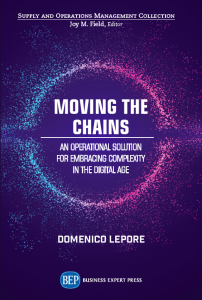
Projects, or any initiative we embark on, can easily get out of hand. They are subject to the chaos that can arise when human interactions are not governed by precise guidelines. Entropy exists and it affects behaviours as well everything else. When we use the Transition Tree Tool to break projects down into actions we prevent chaos: at every step we can scrutinize the effectiveness of our action, the validity of its logic and its coherence with the identified need. (This is of course not a complete guide to Project Management. For that, please see Critical Chain.)
Dr. Domenico Lepore, international expert in systemic and sustainable management, talks here about the Thinking Process Tools from the Theory of Constraints.
Tools for collaboration
The Prerequisite Tree and the Transition Tree were both developed for the same purpose but they are “genetically” different. A Prerequisite Tree is a map; it is based on a logic of necessity and does not foresee any check based on conditions of sufficiency. It is, essentially, a roadmap, a guide that provides a suitable route to the goal. Its main value lies in the collaborative effort required to build it and it is an ideal tool for teamwork. It is the simplest of the Thinking Process Tools to learn but it can be misleading; it is not just a list, it is a list with priorities dictated by logical prerequisites and these prerequisites are, in turn, altered by the amount of resources at hand. You will be surprised to see how many different points of view there are in a group trying to address “what is logically a prerequisite to what”.
Reducing variation to prevent chaos with the Transition Tree
A Transition Tree is a conveyor of understandable, usable and comprehensive knowledge aimed at executing a precise task with very little variation. Transition trees are developed any time it is necessary to convey to somebody a precise procedure to transform an input into an output. If it were to be used within the framework of a conventional quality assurance documentation it would certainly be in the so called “work instructions”. Transition Trees use an extremely powerful cause-and-effect sufficiency logic; in other words, every intermediate output is checked in terms of the sufficiency clauses that determine it. The transition tree is built by stating the final result we want to achieve, normally an Intermediate Objective (I.O.) of a Prerequisite Tree. The basic, repetitive, five-block structure of a transition tree is the following:
- a starting situation
- the prevailing logic of the situation
- the need triggered by the prevailing logic
- the action taken to satisfy the need
- the logic of the action – why we have taken that action
As a result of the action taken, the reality will change to a new state and we can easily verify if we are getting closer to the final result we want to achieve with the Transition Tree. At every step we can scrutinize the effectiveness of our action, the validity of its logic and their coherence with the identified need.

Supporting Systems Thinking with Effective Thinking Processes
Prerequisite Trees and Transition Trees are the Thinking Process Tools we use to ensure that all the knowledge available is captured and used in an orderly and proficient manner. Moreover, we can use them as a backbone for any project we want to undertake in as much as they provide a clear-cut set of actions that can be easily timed and staffed. In other words, the actions on the Transition Trees can be easily transformed into tasks of a project with an appropriate duration and allocated resources.
The Thinking Process Tools cover a pattern that links the different phases of a transformational project: what to change – what to change to – how to cause the change. These phases activate very distinct elements of our intellect: intuition, understanding and knowledge, which the human mind struggles to hold together with the cohesiveness required for a minimally complex project.
The Thinking Processes have been devised to improve this cohesiveness and help us access a much higher level of systemic intelligence (the word in Hebrew is sechel). The Thinking Process Tools are the quintessential support to systems thinking and, just as with Statistical Process Control (SPC), it will take mankind several decades to appreciate their depth and scope.
Contact: intelligentmanagement@sechel.ws
SCHEDULE AN INTRODUCTORY CALL WITH US








Leave a Reply